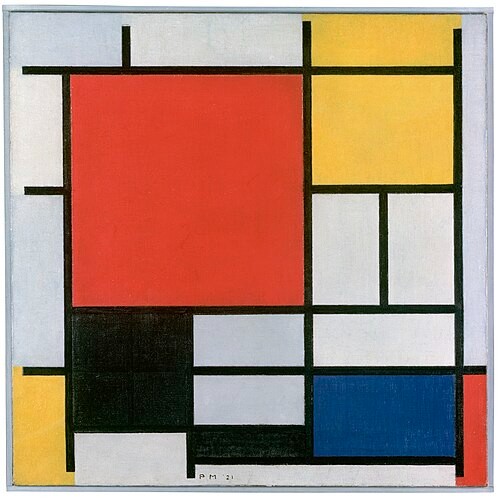In his 1990 opera Vincent, Finnish composer Einojuhani Rautavaara (1928–2016) took scenes from the life of the artist Vincent van Gogh (1853–1890) and, to his own libretto, created a work that starts in the mental hospital at Saint-Rémy, where he painted The Starry Night. The story moves back and forth in time through his memories, before closing in a final monologue that moves from disillusion with the past toward love for life.
Rautavaara took material from this opera to create his Sixth Symphony, Vincentiana. The orchestral prelude (Starry Night) is the core of the first movement.
Einojuhani Rautavaara: Symphony No. 6, “Vincentiana” – I. Starry Night (Helsinki Philharmonic Orchestra; Max Pommer, cond.)
In the painting, the dark cypress tree in the left foreground is the connection between the village that sleeps quietly while overhead, the stars are in brilliant motion. For van Gogh, the stars seemed like dots on a map; far away places that were accessible not by a train but only by death.
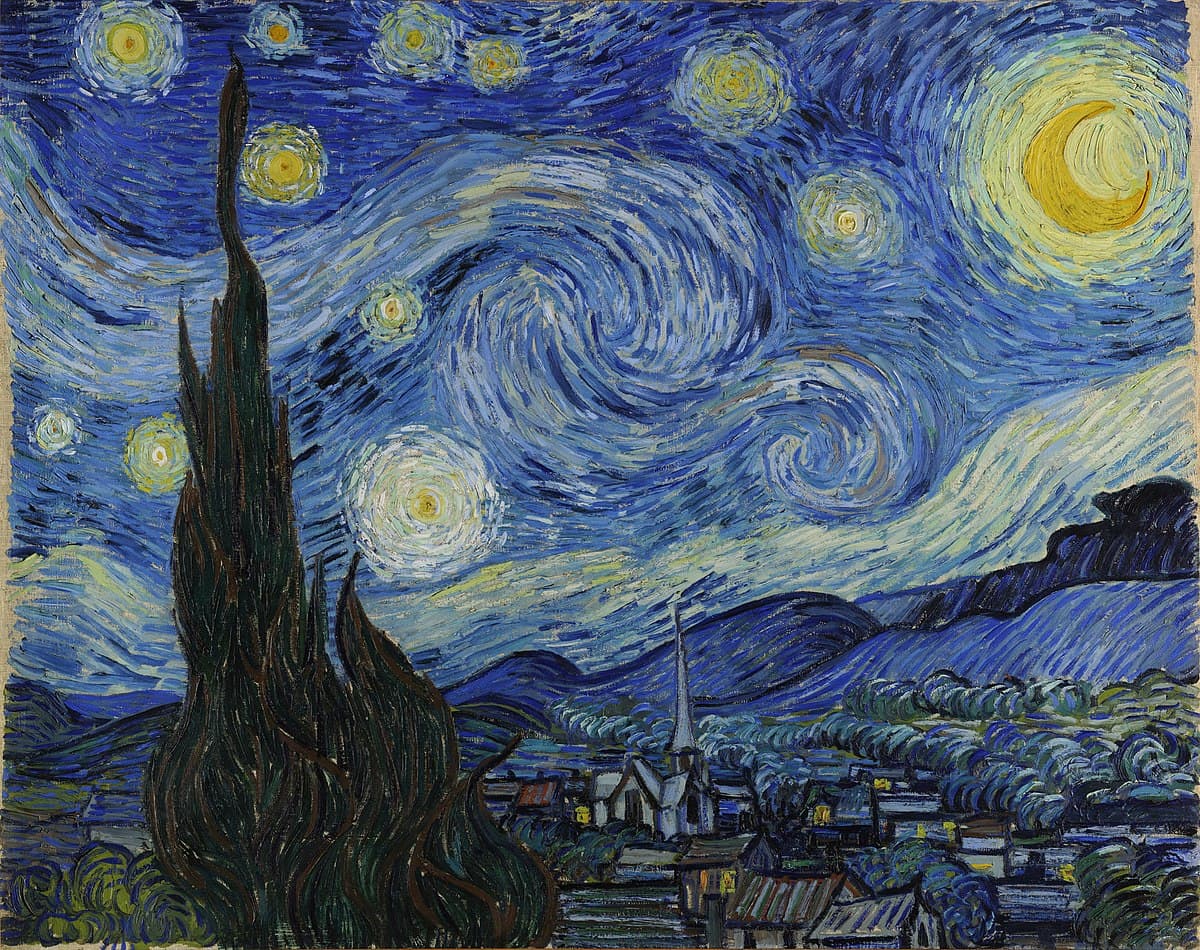
Van Gogh: The Starry Night, 1889 (New York: MoMA)
The work breaks away from van Gogh’s normal factual relationship to nature. There was no small village and the church spire that lies at the heart of this seeming French village was more like the spires of his native Netherlands. The sky is also of his imagination – the roiling sky was only visible to him and the addition of the morning star, Venus, as the bright white section next to the cypress to a night sky mixes times together. ‘Leaving behind the Impressionist doctrine of truth to nature in favour of restless feeling and intense colour, as in this highly charged picture, van Gogh made his work a touchstone for all subsequent Expressionist painting’.
Movement II, The Crows, recalls another of van Gogh’s famous works: Wheatfield with Crows.
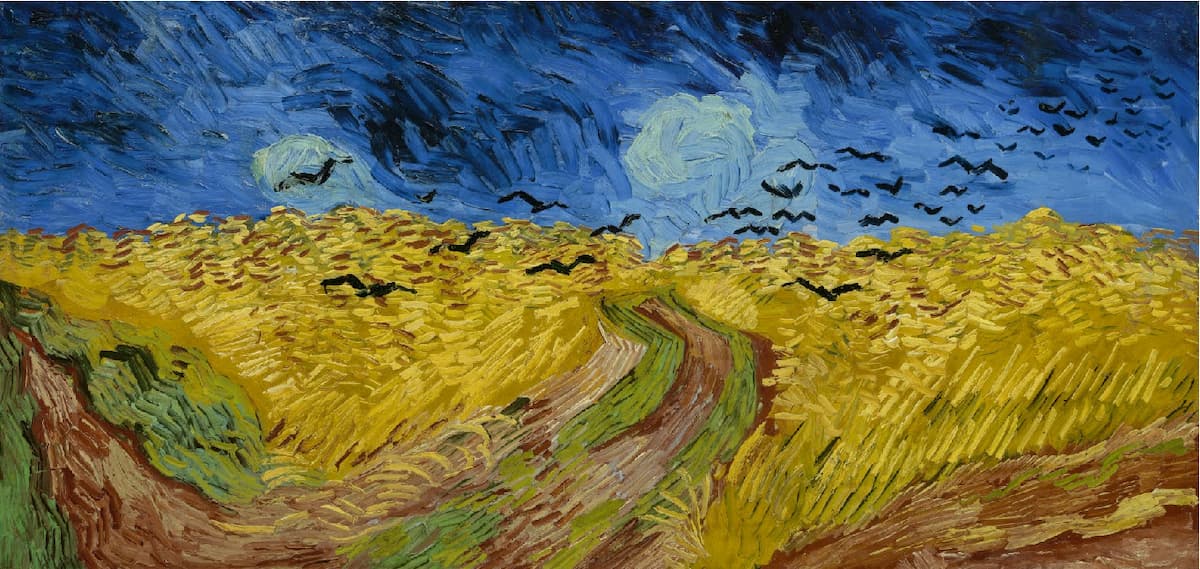
Van Gogh: Wheatfield with Crows, 1890 (Amsterdam, Van Gogh Museum (Vincent van Gogh Foundation))
Falsely said to be van Gogh’s last work, with viewers seeing the path leading to nowhere and the ominous sky as a prescient warning of the artist’s death at 37, Wheatfield with Crows stands as a strong colour statement. The darkening skies, the blackbirds that link light and shadow, the wheat flexing in the wind, and the dirt tracks that lead to elsewhere were used by van Gogh to express ‘sadness, extreme loneliness’, but at the same time, show the strength he saw in the countryside. Red dirt banded by green grass, yellow-orange wheat contrasting with the dark blue of the sky, and all of it seemingly in motion gives a darkly optimistic view of the world surrounding the artist.
Rautavaara’s second movement, entitled simply The Crows, starts with both the motion of the wheat and the birds with the percussion and brass adding in the menace of the darker colours.
Einojuhani Rautavaara: Symphony No. 6, “Vincentiana” – II. The Crows (Helsinki Philharmonic Orchestra; Max Pommer, cond.)
The next movement, Saint-Remy, doesn’t refer to a painting but to the asylum van Gogh entered in Saint-Rémy-en-Provence. He entered the Saint-Paul-de-Mausole asylum in May 1889 and remained there for a year, leaving it 3 months before his death to go to the Paris suburb of Auvers-sur-Oise to be closer to his doctor and his brother Theo.
Einojuhani Rautavaara: Symphony No. 6, “Vincentiana” – III. Saint-Remy (Helsinki Philharmonic Orchestra; Max Pommer, cond.)
This movement opens lighter and brighter before moving into a strange mix of altered sounds. The paintings van Gogh created in the asylum are noted for the swirls (such as The Starry Night). Lack of access to the outside world made him turn to create his own versions of other artists’ works, such as Millet’s The Sower.
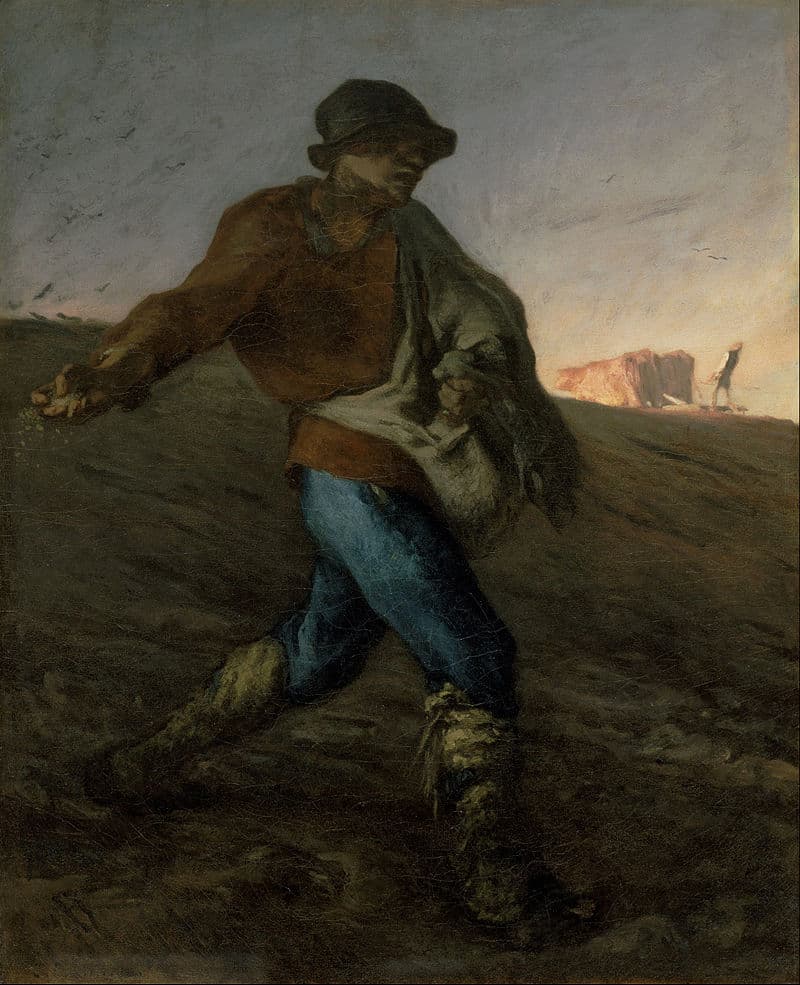
Millet: The Sower, 1850 (Boston: Museum of Fine Arts)
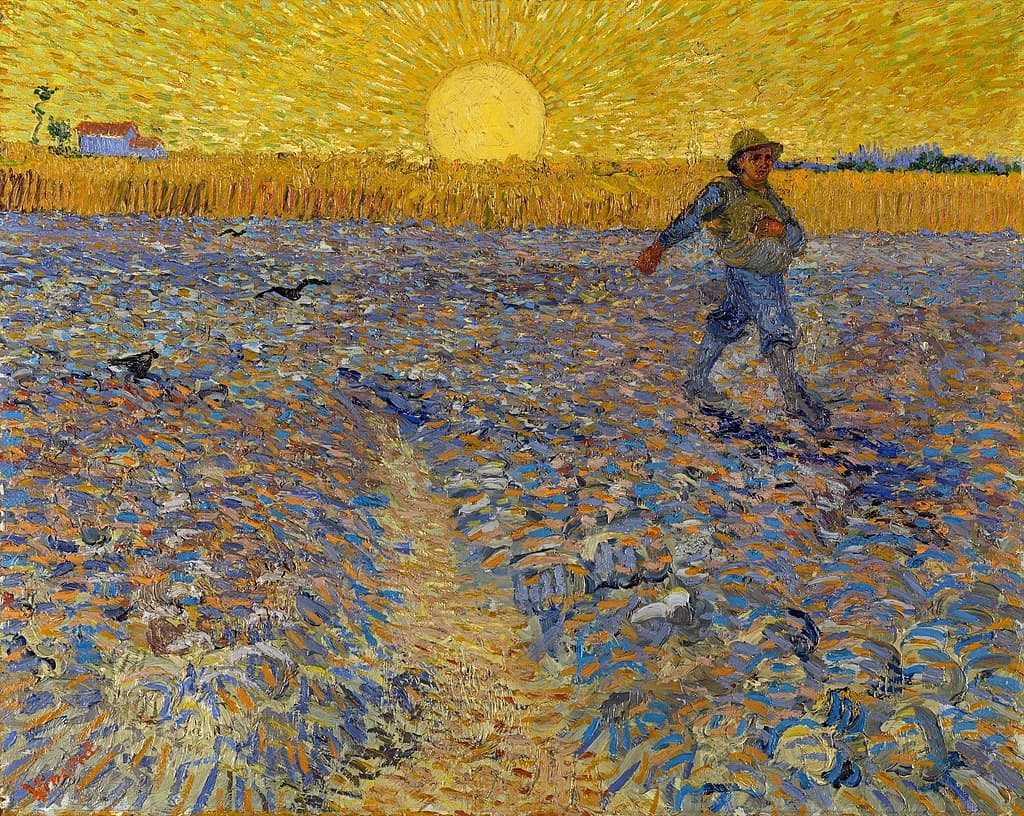
Van Gogh: The Sower (after Jean-François Millet), 1888.( Otterlo, Kröller-Müller Museum)
The final movement of the symphony, Apotheosis, by its very title, seems to ask the question: did van Gogh achieve apotheosis, the elevation to divine status? Throughout the work, the use of a synthesizer made the madness and vision of van Gogh come to life. In this movement, we have music that seems to bring van Gogh higher and higher, and the final duet between the synthesizer and flute ends with the flute triumphant – and leaving us hanging with an unresolved chord that reflects van Gogh’s continuing divine status.
The addition of the synthesizer to the normal symphony permits Rautavaara to bring us into the paintings: the swirling stars, the menacing sky, the light visible from van Gogh’s asylum cell, and, finally, his god-like status as a visionary master.
Einojuhani Rautavaara: Symphony No. 6, “Vincentiana” – IV. Apotheosis (Helsinki Philharmonic Orchestra; Max Pommer, cond.)
In creating a symphony out of his opera, Rautavaara brings his music to a larger audience and collapses the larger work’s themes and images into sounds that evoke van Gogh’s world.
For more of the best in classical music, sign up to our E-Newsletter

